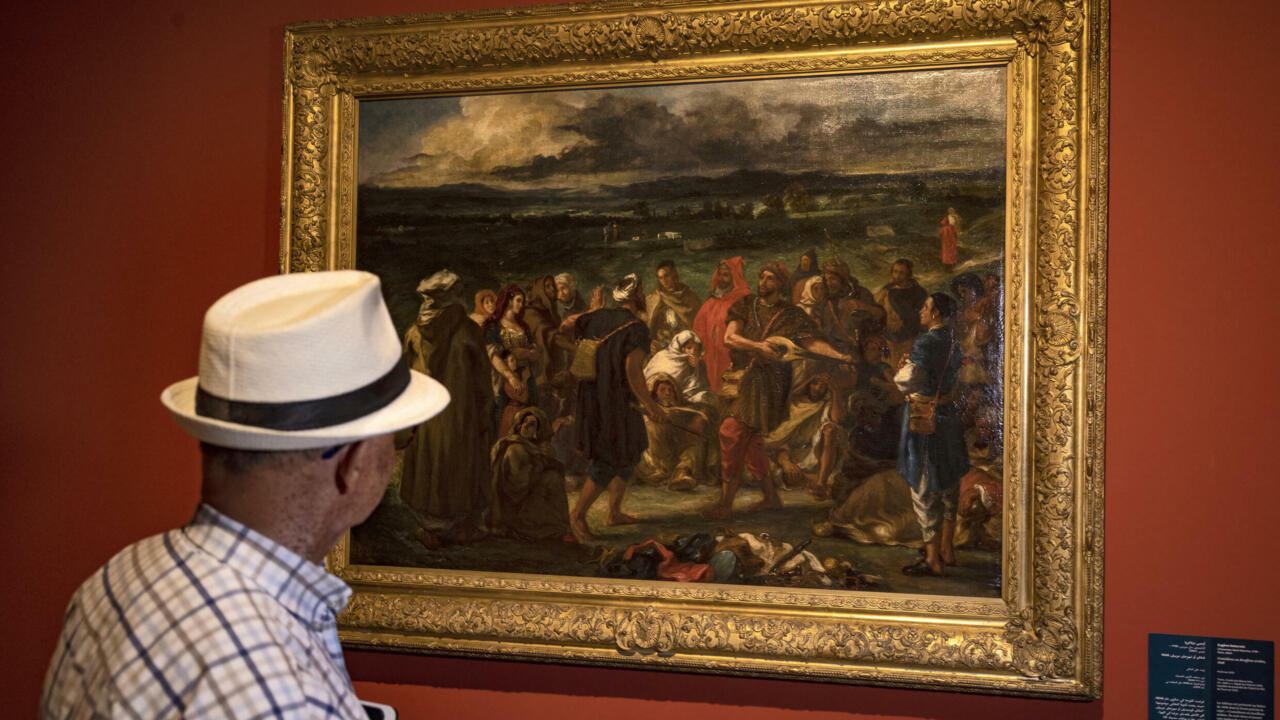Rabat (AFP)
"I thought I was dreaming", had launched Eugène Delacroix on his arrival in Tangier.
The famous French painter undertook in 1832 a six-month initiatory journey to Morocco, retraced by an exhibition tribute to Rabat, the capital of the kingdom.
On the dazzling red-orange walls of the Mohammed VI Museum in Rabat (MMVI), around thirty paintings, drawings, engravings, lithographs and sketches offer a snorkeling dive into the Moroccan period of the master of French romanticism for the exhibition "Delacroix souvenirs of a trip to Morocco ", from July 7 to October 9, 2021.
"This trip nourished his work and gave it a new dimension. On his return, he will exhibit, every year, paintings evoking Morocco", explains in an interview with AFP Claire Bessède, co-curator of the exhibition and director of the Eugène Delacroix museum in Paris.
At 34, the painter of "Liberty leading the people" (1830), already at the height of his career, agreed to accompany a French delegation charged by King Louis-Philippe with a diplomatic mission to Sultan Moulay Abderrahmane.
"He had no political role, his motivation was to discover the Orient through Morocco. It's unprecedented because in his life, he only made two trips, to England and to Morocco," recalls Ms. Bessède.
- "Inspiration pool" -
During this Moroccan stay, the artist stores, in several notebooks, lights, landscapes, facial features, simple or ceremonial costumes ... He draws, makes watercolors, takes notes and then paints on his return to Paris and until 'at the end of his life in 1863.
"He is one of Morocco's first ambassadors of light," Abdelaziz El Idrissi, co-curator of the exhibition and director of the MMVI in Rabat, told AFP.
Tangier, its first window on Morocco, "fascinates" it, according to Ms. Bessède.
Then begins a journey by road that takes him to Meknes, further south, where he meets the Sultan: a "defining" moment that he will immortalize in one of the most famous paintings of this period.
This painting, painted more than ten years after its expedition, did not make the trip to Rabat because it is "very fragile", indicates the director of the Parisian museum.
# photo1
But a sketch made just after his return is on display at the museum: this beautiful piece, where only silhouettes can be seen, shows the audience of the French delegation in front of the seventh ruler of the Alawite dynasty.
In the absence of major works from his Moroccan period such as "Jewish Wedding in Morocco" (1839), the exhibition organized in collaboration with Le Louvre and the Musée Delacroix cleverly gives an idea of the artist's studio. , with the question of memory as a focal point.
On returning to France, Delacroix had taken in his luggage a series of handicrafts of all kinds, "a real source of inspiration which will follow him from workshop to workshop until his death", specifies the commissioner.
- "Out of time" -
These objects, about sixty, serve as a common thread for the exhibition: musical instruments (tambourine, lute, pike fiddle), clothes (caftans, tunics, socks), ceramics or weapons (saber, powder bags , cartridge belt).
An inexhaustible source of inspiration for the artist disseminated in his various orientalist works, like "Camp arabe, la nuit" (1863) where men dressed in djellabas languish around a fire, or even "Comedians or Arab jesters "(1848), a representation of musicians playing the lute, in the open air, surrounded by a few characters.
"The paintings of the Moroccan period are timeless. Delacroix was not in a literal interpretation of Morocco, he forged his own outlook on the country", analyzes Ms. Bessède.
This singular look will push, in one way or another, European artists to put their luggage in Morocco: "It will take Moroccan culture with it beyond the southern Mediterranean and will open the eyes of European artists on this unusual destination at the time, "notes Mr. Idrissi.
The end of the exhibition is also dedicated to the Moroccan paintings of certain artists who made the trip to the kingdom in the footsteps of Delacroix: there are ten paintings by French orientalists Benjamin Constant and Louis-Auguste Girardot, from the British Frank Brangwyn but also the master of French fauvism, Henri Matisse.
© 2021 AFP

